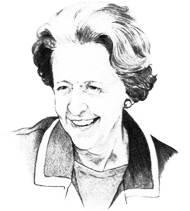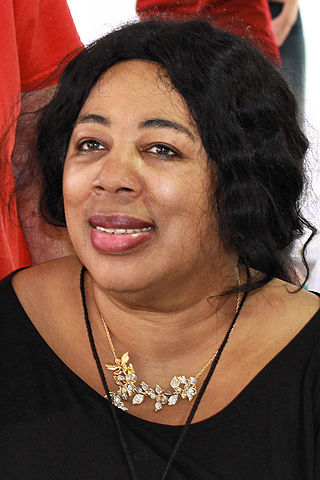
The organized environmental movement is represented by a wide range of non-governmental organizations or NGOs that seek to address environmental issues in the United States. They operate on local, national, and international scales. Environmental NGOs vary widely in political views and in the ways they seek to influence the environmental policy of the United States and other governments.

Love Canal is a neighborhood in Niagara Falls, New York, United States, infamous as the location of a 0.28 km2 (0.11 sq mi) landfill that became the site of an environmental disaster discovered in 1977. Decades of dumping toxic chemicals killed residents and harmed the health of hundreds, often profoundly. The area was cleaned up over 21 years in a Superfund operation.

Denis Allen Hayes is an environmental advocate and an advocate for solar power. He rose to prominence in 1970 as the coordinator for the first Earth Day.

Environmental racism, ecological racism, or ecological apartheid is a form of racism leading to negative environmental outcomes such as landfills, incinerators, and hazardous waste disposal disproportionately impacting communities of color, violating substantive equality. Internationally, it is also associated with extractivism, which places the environmental burdens of mining, oil extraction, and industrial agriculture upon indigenous peoples and poorer nations largely inhabited by people of color.

Cancer Alley is the regional nickname given to an 85-mile (137 km) stretch of land along the Mississippi River between Baton Rouge and New Orleans, in the River Parishes of Louisiana, which contains over 200 petrochemical plants and refineries. This area accounts for 25% of the petrochemical production in the United States. Environmentalists consider the region a sacrifice zone where rates of cancer caused by air pollution exceed the federal government's own limits of acceptable risk.

Environmental justice or eco-justice, is a social movement to address environmental injustice, which occurs when poor or marginalized communities are harmed by hazardous waste, resource extraction, and other land uses from which they do not benefit. The movement has generated hundreds of studies showing that exposure to environmental harm is inequitably distributed.

Environmentalism or environmental rights is a broad philosophy, ideology, and social movement about supporting life, habitats, and surroundings. While environmentalism focuses more on the environmental and nature-related aspects of green ideology and politics, ecologism combines the ideology of social ecology and environmentalism. Ecologism is more commonly used in continental European languages, while environmentalism is more commonly used in English but the words have slightly different connotations.

Barbara Mary Ward, Baroness Jackson of Lodsworth, was a British economist and writer interested in the problems of developing countries. She urged Western governments to share their prosperity with the rest of the world and in the 1960s turned her attention to environmental questions as well. She was an early advocate of sustainable development before this term became familiar and was well known as a journalist, lecturer and broadcaster. Ward was adviser to policymakers in the UK, United States and elsewhere. She is the founder of the International Institute for Environment and Development (IIED).
In the early 1960s, an interest in women and their connection with the environment was sparked largely by Ester Boserup's book Woman's Role in Economic Development. Starting in the 1980s, policy makers and governments became more mindful of the connection between the environment and gender issues. Changes regarding natural resource and environmental management were made with the specific role of women in mind. According to the World Bank in 1991, "Women play an essential role in the management of natural resources, including soil, water, forests and energy...and often have a profound traditional and contemporary knowledge of the natural world around them". Whereas women were previously neglected or ignored, there was increasing attention to the impact of women on the natural environment and, in return, the effects the environment has on the health and well-being of women. The gender-environment relations have ramifications in regard to the understanding of nature between men and women, the management and distribution of resources and responsibilities, and the day-to-day life and well-being of people.

The Valley of the Drums is a 23-acre toxic waste site near Brooks in northern Bullitt County, Kentucky, near Louisville, named after the waste-containing drums strewn across the area. After it had been collecting waste since the 1960s, the United States Environmental Protection Agency (EPA) analyzed the property and creek in 1979, finding high levels of heavy metals, polychlorinated biphenyls, and some 140 other chemical substances. It is known as one of the primary motivations for the passage of the Comprehensive Environmental Response, Compensation, and Liability Act, or Superfund Act of 1980. While the widely publicized Love Canal disaster is often credited as the reason the Superfund law was passed, Love Canal activist Lois Gibbs has said that Love Canal looked like a suburban community, while "Valley of the Drums became the visualization of the problem." Officially, cleanup began at the site in 1983 and ended in 1990, though later problems have been reported and investigated.

Harriet A. Washington is an American writer and medical ethicist. She is the author of the book Medical Apartheid, which won the 2007 National Book Critics Circle Award for Nonfiction. She has also written books on environmental racism and the erosion of informed consent in medicine.
The Indigenous Environmental Network (IEN) is a coalition of indigenous, grassroots environmental justice activists, primarily based in the United States. Group members have represented Native American concerns at international events such as the United Nations Climate Change conferences in Copenhagen (2009) and Paris (2016). IEN organizes an annual conference to discuss proposed goals and projects for the coming year; each year the conference is held in a different indigenous nation. The network emphasizes environmental protection as a form of spiritual activism. IEN received attention in the news as a major organizer of the fight against the Keystone Pipeline and the Dakota Access Pipeline in the Dakota Access Pipeline protests.

Ecofeminism is a branch of feminism and political ecology. Ecofeminist thinkers draw on the concept of gender to analyse the relationships between humans and the natural world. The term was coined by the French writer Françoise d'Eaubonne in her book Le Féminisme ou la Mort (1974). Ecofeminist theory asserts a feminist perspective of Green politics that calls for an egalitarian, collaborative society in which there is no one dominant group. Today, there are several branches of ecofeminism, with varying approaches and analyses, including liberal ecofeminism, spiritual/cultural ecofeminism, and social/socialist ecofeminism. Interpretations of ecofeminism and how it might be applied to social thought include ecofeminist art, social justice and political philosophy, religion, contemporary feminism, and poetry.
Communities for a Better Environment (CBE), previously known as Citizens for a Better Environment, is a policy-focused non-profit organization started in 1971 by Marc Anderson and David Come in Chicago, Illinois. In the late 1970s and early 1980s, CBE expanded to California, Wisconsin, and Minnesota. CBE established itself in San Francisco in 1978 and expanded to Los Angeles in 1982. Today, CBE is based in Oakland, CA and Huntington Park, CA, effecting positive change in communities throughout California, including Richmond, East Oakland, Vernon, Huntington Park, Boyle Heights, Pacoima, Wilmington, and SE Los Angeles. CBE was the first environmental organization to practice door-to-door canvassing by directly involving community members. In 1980, CBE won the United States Supreme Court decision on Village of Schaumburg v. Citizens for a Better Environment 444 U.S. 620, protecting the 1st and 14th Amendment Rights of door-to-door activists with CBE and countless other public interest organizations. CBE's early combination of grassroots organizing with research and legal work provided the innovative edge needed to challenge large-scale industries and refineries, and government policies.
Mindy Thompson Fullilove is an American social psychiatrist who focuses on the ways social and environmental factors affect the mental health of communities. She is currently a professor of Urban Policy and Health at The New School.

Haven Coleman is an American climate and environmental activist. She is the co-founder and co-executive director of U.S. Youth Climate Strike with youth activists Alexandria Villaseñor and Isra Hirsi. an organization dedicated to raising awareness and catalyzing change concerning the climate crisis.
Environmental racism is a form of institutional racism, in which people of colour bear a disproportionate burden of environmental harms, such as pollution from hazardous waste disposal and the effects of natural disasters. Environmental racism exposes Native Americans, African Americans, Asian Americans, Pacific Islanders, and Hispanic populations to physical health hazards and may negatively impact mental health. It creates disparities in many different spheres of life, such as transportation, housing, and economic opportunity.

Niria Alicia Garcia is a Xicana environmental activist, human rights advocate, and educator. She is an organizer involved with indigenous-led species restoration efforts in California's Sacramento River watershed.
William "Bill" Sanjour worked at the Environmental Protection Agency and was a whistleblower.
Jacqueline (Jacqui) Patterson is founder of The Shirley Chisholm Legacy Project and former director of the NAACP Environmental and Climate Justice Program, which are dedicated to addressing the intersecting issues of environmental and social justice. Her work focuses on empowering marginalized communities, particularly Black women, by providing resources and advocating for systemic change towards a sustainable and equitable future.















